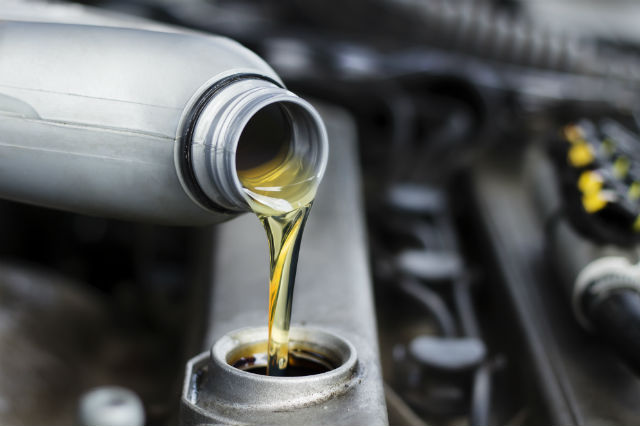If you drive a car, you probably also know that you need to change the oil every so often to keep things running smoothly. And as we’ve discussed, proper car maintenance begins with oil checks – give it a read for tips on when to know if it’s time for an oil change.
But how often should you be changing your oil? Is it something you can do yourself or do you need to pay someone else to do it? And what kind of oil and filter should you use? Here are the answers to these common questions.
How often should the oil be changed?
At one time, the hard-and-fast rule for oil changes was that you should change your oil every 3,000 miles or every three months. Although some people still adhere to this schedule, it’s really not necessary to change your oil that frequently. Engines and oil have advanced over the years, and many car makers recommend waiting 5,000 to 10,000 miles, or six to 12 months, between oil changes. Consult your owner’s manual for guidance.
Holding off on oil changes can add up to a nice yearly savings. If you drive 15,000 miles per year, for example, and follow the old adage of changing your oil every 3,000 miles, you’re looking at five oil changes a year. If you’re paying the average cost of $40 for an oil change (using conventional oil) at a garage, that’s $200 a year. However, if you drive 7,500 miles before changing the oil, that’s only two oil changes a year, costing you $80.
If you don’t drive very much or only for short distances, you might think you don’t need to worry about regular oil changes, but the opposite is true. If you don’t drive on a regular basis or if you go only a few miles at a time, the oil in your engine doesn’t heat up enough to efficiently burn off moisture. You’ll need to change it before you hit the mileage suggested between changes. For example, if your owner’s manual says you should change your oil every 8,000 miles, consider getting it done at 6,000 miles instead.

Should you change your own oil?
While it’s easy to find a professional at an AAA Approved Auto Repair Facility to do the job, another way to lower the cost of an oil change is to do it yourself. Changing the oil is one of the more basic, and easiest, automobile maintenance tasks. After you’ve done it a few times, you’ll not only save money on each change but you’ll save time waiting for your car to be done at the shop.
Changing your own oil
To change your car’s oil, you’ll need the following equipment:
• A wrench to remove the drain plug (consult your owner’s manual for what kind/size wrench).
• An oil filter wrench.
• An oil pan.
• A funnel.
• Latex or other strong gloves.
• Optional: Jack or ramps, depending on whether you can get under your car without them.
• Oil.
• Oil filter.
• Replacement plug.
The basic procedure for changing your oil is as follows:
- Start with a warm engine. If your car has been sitting for a while, run the engine for a few minutes first. Raise the vehicle by driving onto a ramp or jacking the car up and safely supporting on jack stands. Block off the back tires so the car doesn’t roll and apply the parking brake and open the hood.
- Consult your owner’s manual to locate the drain plug under your car. Set an oil pan in place underneath. Wearing gloves, remove the plug and allow old oil to drain out. Tighten the drain plug to the proper specifications. (Some manufacturers recommend replacing drain plug gaskets with each oil change)
- Find and replace the old oil filter. There are two types of filters: spin-on and cartridge. Using a suitable wrench or socket, remove the filter or canister and follow the filter directions for proper installation. Make sure the drip pan is ready to catch any leaks.
- Locate the oil cap, usually at the top of the engine. Remove cap and use a funnel to add new oil of the proper grade to the manufacturer’s indicated volume. On a level surface, check oil level using the dipstick, or in some cases the onboard computer system.
- Store old oil in a sealable plastic container.
Once you’ve added the oil, check the the level with the dipstick. You might notice the oil you’re adding isn’t dark like what’s on the dipstick, but instead more of an amber color. That could make you think your oil is dirty and should be changed immediately. Oil turns dark pretty quickly so the color isn’t a great indicator of its cleanliness. Sticking with the manufacturer’s recommended intervals for oil changes is the best way to be sure your oil is clean and doing its job.
As for the old oil, most auto parts retailers will accept used motor oil. Depending on where you live, your community may also have a hazardous waste disposal program you can utilize.
How much do you save changing your own oil?
So, is it cheaper to change your own oil? By doing this task yourself, you’ll save between $25 and $75 per oil change, depending on the type of oil and filter you use.
Which kind of oil and filter should you use?
At first glance, synthetic oil would seem to be the no-brainer choice because it lasts significantly longer than conventional oil. However, many vehicles do not require expensive synthetic oil. Check the owner’s manual or inside the oil cap on newer model cars to see the recommended oil weight. If you tend to drive short distances, push your vehicle (such as pulling a trailer) or live in an extreme climate, then synthetic would be the better choice to extend the life of your motor.
Read more about synthetic vs. conventional oil.
When choosing an oil filter, select one that is rated for the mileage interval you are following between oil changes. In other words, don’t use a cheap filter with expensive synthetic oil – the filter won’t last, and you will have wasted money using the higher-end oil. The cost difference between an economy filter and a better-quality one isn’t great, so it is worth spending a little more to get a filter that will last. Consult with the clerk at the auto parts store or check the filter manufacturer’s website for more detail about which filters will last longer, particularly if you’re aiming to go longer between oil changes.
Have more questions about how to change your own oil? Ask the Car Doctor.
If you’re still not comfortable with the idea of changing your own oil and would rather a professional do the job, find a AAA Approved Auto Repair Facility near you.
8 Thoughts on “Should You Change Your Own Oil?”
Leave A Comment
Comments are subject to moderation and may or may not be published at the editor’s discretion. Only comments that are relevant to the article and add value to the Your AAA community will be considered. Comments may be edited for clarity and length.


















For years I changed my oil in both vehicles
I stopped the practice 18 years ago.
I get out of the house early, get to the dealer by 7am. First in line, put in an hour.
So I pay fifteen or so bucks more than if I did myself.
I’m in my 70’s, I don’t any longer need to do the dirty work and oil disposal.
Lol I don’t know where you live,, but where I live it cost me almost $75.00 when I thought it would only cost $35.00 or so,, but I never seen any place charge just $15 or so..
There is not much saving by changing oil yourself. The biggest disadvantage of someone doing it for you is that you cannot be sure about the origin of the oil they use.
I take the used oil and filters to the local jiffy lube,they take it with no problem.
If you change your own oil where do you dispose of the old oil?
Hi Todd, thanks for the question. Most auto parts retailers will accept used motor oil. Most communities also have hazardous waste disposal programs you can utilize.
Your article fails to mention what to do with the used oil that you’ve drained from the vehicle. Some people just dump it down the sewer, which is bad for the environment. Many stores, like Walmart and AutoZone, will accept used oil and dispose of it properly.
It would cost me almost $30 for oil + almost $10 for a filter. I can get it changed for about that same amount. You change your oil to get out the dirty carbon filled, not because it lost it’s Lubricity, so synthetic doesn’t make sense since you are keeping Dirty Oil in your car longer. Carbon wears out valves & rings